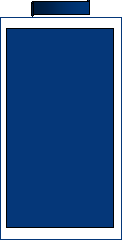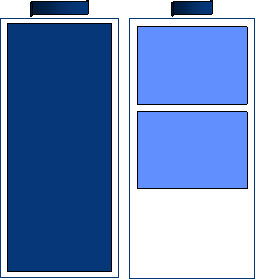


CS-reminder induced
recovery from overshadowing in an appetitive Pavlovian preparation.
Kosuke Sawa (JSPS (Nagoya University), UCLA) &
Aaron P. Blaisdell (UCLA)
Discussion

Introduction

References

Method
Results
Pavlov (1927) noted that a CS shows reduced behavioral control (i.e., overshadowing) if it was paired with the US in the presence of a more salient CS than if the more salient CS was
absent.
Acquisition-based theories (e.g., Rescorla & Wagner, 1972) attribute overshadowing to a reduced CS-US association. By contrast, performance-based theories (e.g., Miller &
Matzel, 1988)
treat overshadowing as a performance (e.g., retrieval) deficit.
Several demonstrations that the response to the overshadowed CS can be augmented, such as by posttraining extinction of the overshadowing CS (e.g., Kaufman & Bolles, 1981) or reexposure to
the overshadowed CS (i.e., a reminder treatment, e.g., Kasprow, Cacheiro, Balaz & Miller, 1982),
support the performance account of overshadowing.
A performance account of overshadowing (and other cue-competition effects, such as blocking) has recently been challenged as being limited to conditioned suppression procedures. Using an appetitive conditioning preparation, Holland (1999) failed to find recovery from overshadowing or blocking when the competing stimulus, the overshadowing or blocking CS respectively, was extinguished.
In the present research, we explored the effect of pre-test exposure to the overshadowed CS (i.e., a reminder treatment) in an appetitive conditioning paradigm to establish whether overshadowing of appetitive conditioning is due to an acquisition or
performance deficit.
In an appetitive conditioning procedure, we
obtained overshadowing
of a soft tone by a loud noise, and recovery from overshadowing when the tone was presented prior to testing.
This establishes the generality of a performance account of overshadowing.
Contemporary acquisition theories cannot explain
the present
result (but see Dickinson & Burke, 1996; Van Hamme & Wasserman, 1994 for recent
modifications of
acquisition theories that allow them to explain some retrospective revaluation effects).
Two possibilities for our success in obtaining recovery from overshadowing while Holland (1999) failed.
A) we used a reminder treatment while Holland used extinction of the competing CS.
B) We gave 8 overshadowing trials while Holland
gave 32 (but see his Exp. 5). It has been shown that overshadowing is attenuated with more trials
(Bellingham &
Gillette, 1981; Stout, Arcediano, Escobar & Miller, 2003).
Perhaps configural learning (e.g., within-compound associations) predominate with extended training, thereby mitigating the effects of
extinction of competing
CS A on responding to target CS X.
Bellingham, W. P. & Gillette, K. (1981).
Attenuation of overshadowing as a function of nondifferential compound conditioning trials. Bulletin of the Psychonomic Society, 18, 218-220.
Dickinson, A. & Burke, J. (1996).
Within-compound associations mediate the retrospective revaluation of causality judgments. Quarterly Journal of Experimental Psychology,
49(B), 60-80.
Holland, P.C. (1999). Overshadowing and blocking as
acquisition deficits: No recovery after extinction of overshadowing or blocking cues. Quarterly Journal of Experimental Psychology,
52(B), 307-333.
Kasprow, W. J., Cacheiro, H., Balaz, M. A. &
Miller, R. R. (1982). Reminder-induced recovery of associations to an overshadowed stimulus. Learning and Motivation, 13, 155-166.
Kaufman, M.A. & Bolles, R. C. (1981). A
nonassociative aspect of overshadowing. Bulletin of the Psychonomic Society, 18, 318-320.
Miller, R. R. & Matzel, L. D. (1988). The
comparator hypothesis: A response rule for the expression of associations. In G. H. Bower (Ed.), The psychology of learning and motivation (Vol. 22, pp. 51-92). San Diego: Academic Press.
Pavlov, I. P. (1927). Conditioned reflexes. Oxford: Oxford University Press.
Rescorla, R. A. & Wagner, A. R. (1972). A
theory of Pavlovian conditioning: Variations in the effectiveness of reinforcement and
nonreinforcement. In A. H. Black & W. F. Prokasy (Eds.), Classical conditioning II: Current research and
theory (pp. 64-99). New York: Appleton-Century-Crofts.
Stout, S., Arcediano, F., Escobar, M. & Miller,
R. R. (2003). Overshadowing as a function of trial number: Dynamics of first- and second-order
comparator effects. Learning
& Behavior, 31,
85-97.
Van Hamme, L. J. & Wasserman, E. A. (1994). Cue
competition in causality judgments: The role of nonpresentation of compound stimulus elements. Learning & Motivation, 25, 127-151.

Figure 1. Mean discrimination
ratio across two-trial blocks.


Figure 2. Mean discrimination ratio across two-trial blocks
pooled across reminder and test days.
Figure 3. Mean discrimination ratio across two-trial block
pooled across OV and Acq groups.
*
*
Subjects.
Forty water-restricted female (M = 251.5g) Long-Evans rats with a prior experimental history with cues unrelated to those used here.
Apparatus.
Each of eight experimental chambers measuring 30 x
25 x 20 cm was housed in separate sound- and light-attenuating environmental isolation chests with a background
noise of 62 dB(A).
Stimuli.
Overshadowing CS A = a noise (15 dB(A) above
background)
Overshadowed CS X = a low-frequency tone (4 dB(A) above background).
All
CSs were 10 s in duration.
Acclimation. Day 1: Rats were first trained to drink from the dipper during one 60-min session in which water
was delivered every 20 ± 15s. During
acclimation, CSs A and X were presented twice.
Phase 1 (Overshadowing Training). Days 2-5: In Groups OV.Rem and OV.Con, rats received two AX-water US pairings (AX+) during each 20-min session for a
total of 8 trials. In Groups Acq.Rem, Acq.Con, and Gen.Dec, rats received 2 X+ trials per daily session. Each trial occurred 8 and 15 min into the session.
Phase 2 (Reminder Treatment). On Day 6, subjects in Groups OV.Rem and Acq.Rem received two presentations of CS X during a 6 min session. Subjects in the other three groups remained in their home
cages during this session but received equivalent handling.
Testing. Day 7: rats
received four nonreinforced presentations of CS X (Groups OV.Rem, OV.Con, Acq.Rem, & Acq.Con) or AX (Group Gen.Dec). A discrimination ratio (nosepoking during the CS and during a 30-s prestimulus period) assessed
conditioning. Trials occurred at 4, 10, 17, and 25 min into a 30-min session.

CR
AX?
handling
X+
Gen.Dec
CR
X?
handling
X+
Acq.Con
CR
X?
X-
X+
Acq.Rem
cr
X?
handling
AX+
OV.Con
CR
X?
X-
AX+
OV.Rem
Prediction
Test
Phase 2
Phase 1
Group
Note: A =
Noise, X = Tone, + = Water US. CR and cr indicate a strong and
weak response, respectively. handling indicates that subjects
received equivalent handling.